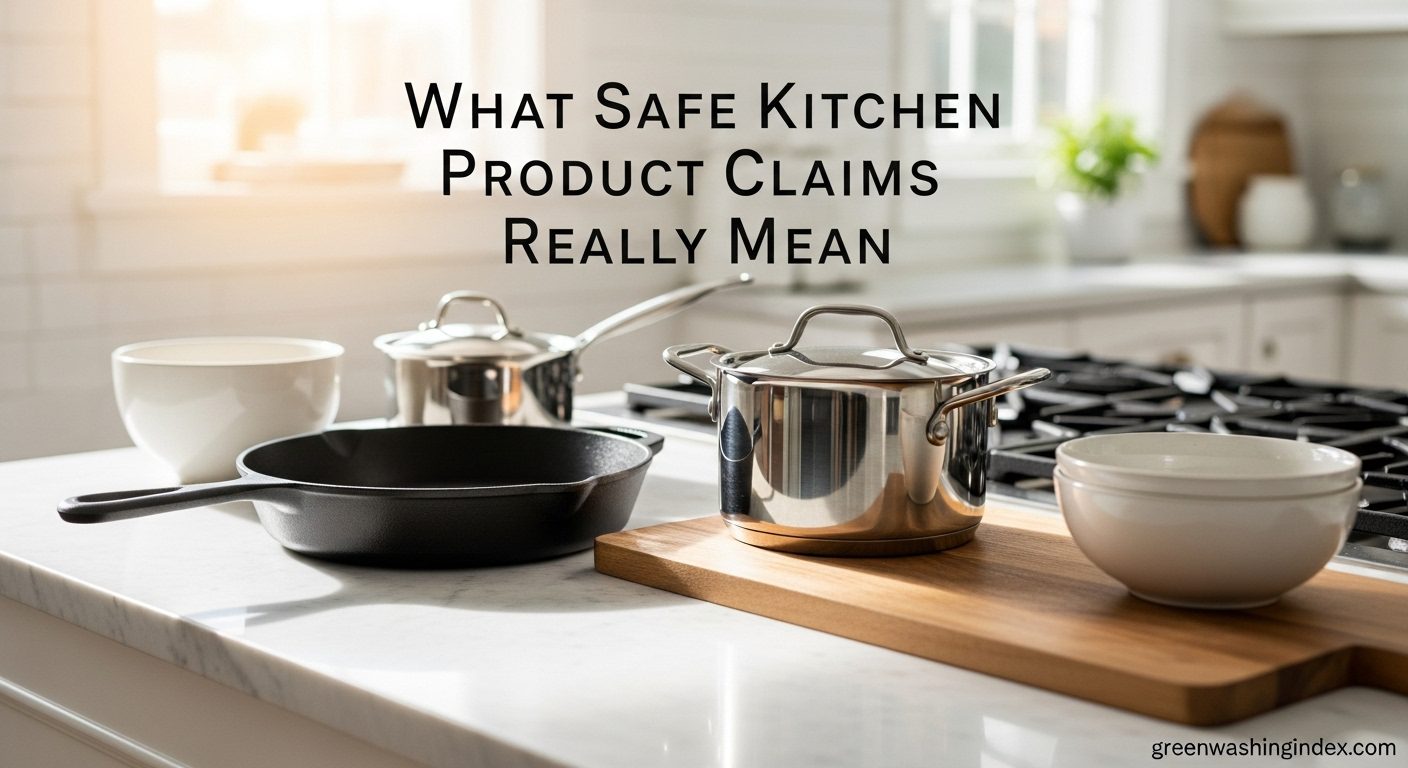

Walk down any kitchen supply aisle today and you’ll be bombarded with products claiming to be “safe,” “non-toxic,” “natural,” and “healthy.” These reassuring words are plastered across everything from cutting boards to cookware, designed to catch the attention of health-conscious consumers. But here’s the problem: most of these claims mean absolutely nothing.
Companies have learned to exploit our growing concerns about household toxins by using official-sounding language that suggests their products have been rigorously tested for safety. In reality, many of these terms have no legal definition and require no third-party verification. Understanding what these claims actually mean can save you money and protect your family’s health.

Marketing teams know exactly which buttons to push. They understand that parents worry about chemical exposure and that health-conscious consumers will pay premium prices for products that seem safer. Terms like “natural” and “non-toxic” trigger positive emotional responses, even when they provide no meaningful information about a product’s actual safety.
This emotional manipulation works because most consumers don’t have time to research every kitchen product they buy. We want to trust that companies are being honest when they make safety claims. Unfortunately, that trust is often misplaced.
Perhaps no term is more misleading than “non-toxic.” Unlike “organic” or “FDA approved,” there’s no legal standard for what makes a product non-toxic. Any company can slap this label on their products without proving anything to anyone.
Consider the marketing around non toxic silverware, where companies prominently advertise their utensils as free from harmful chemicals. While some of these products genuinely use safer materials like high-grade stainless steel, others simply avoid one or two specific chemicals while containing other potentially harmful substances. Without standardized testing requirements, consumers have no way to verify these claims.
The absence of regulation means that a product labeled “non-toxic” might be genuinely safer than alternatives, or it might be identical to conventional products with clever marketing. You simply can’t tell from the label alone.
Many consumers assume that “FDA approved” means a product has undergone rigorous safety testing. In reality, FDA approval for kitchen products is much more limited than most people realize. The FDA primarily regulates food additives and substances that directly contact food, but many kitchen products fall into regulatory gray areas.
Some companies stretch their limited FDA compliance into broad safety claims. A product might meet basic FDA requirements for food contact while still containing chemicals that raise health concerns. Understanding this distinction helps you evaluate whether FDA approval actually means what you think it does.
The “BPA-free” label perfectly illustrates how companies can mislead consumers while technically telling the truth. While avoiding BPA is generally positive, many BPA-free products simply substitute other chemicals that may be equally problematic.
Companies discovered that consumers associate BPA with health risks, so they removed it and prominently advertised its absence. However, the replacement chemicals often haven’t been studied as extensively as BPA, meaning we don’t yet know their long-term effects. Focusing on what’s NOT in a product can distract from what IS in it.
Not all safety claims are meaningless. Third-party certifications from organizations like NSF International provide genuine verification that products meet specific safety standards. These certifications require independent testing and ongoing monitoring, making them far more reliable than company self-claims.
Look for specific certification numbers and verify them on the certifying organization’s website. Real certifications can be looked up and verified, while fake seals often use vague language or made-up certification bodies.
Material-specific standards also provide useful information. For stainless steel products, look for specific grades like 304 or 316, which indicate the steel’s composition and corrosion resistance. Food-grade silicone should meet FDA standards for food contact, while wooden products should specify the type of wood and any treatments used.
Certain marketing tactics should immediately raise your suspicion. Vague language like “naturally safer” or “healthier choice” provides no specific information you can verify. Self-created seals and certifications that can’t be independently verified are meaningless.
Be especially wary of products that emphasize what they don’t contain rather than what they do. While avoiding harmful chemicals is important, this focus can mask the presence of other problematic ingredients.
The good news is that you don’t have to be a chemist to make better purchasing decisions. Start by researching unfamiliar claims online and looking up any certifications mentioned on product packaging. Legitimate safety organizations maintain public databases where you can verify certifications.
When in doubt, choose products made from well-understood materials with long safety records. High-quality stainless steel, natural wood, and uncoated cast iron have been used safely in kitchens for generations.
Understanding the difference between marketing claims and verified safety information puts you back in control of your purchasing decisions. While companies will continue using misleading language to sell products, informed consumers can see through these tactics and choose products based on actual safety rather than clever advertising.
Your family’s health is too important to leave to marketing departments. By demanding transparency and seeking out verified information, you can create a truly safer kitchen without falling for empty promises.

Don't let aphids, slugs, and caterpillars ruin another plant. Take back control with simple, natural methods that actually work.